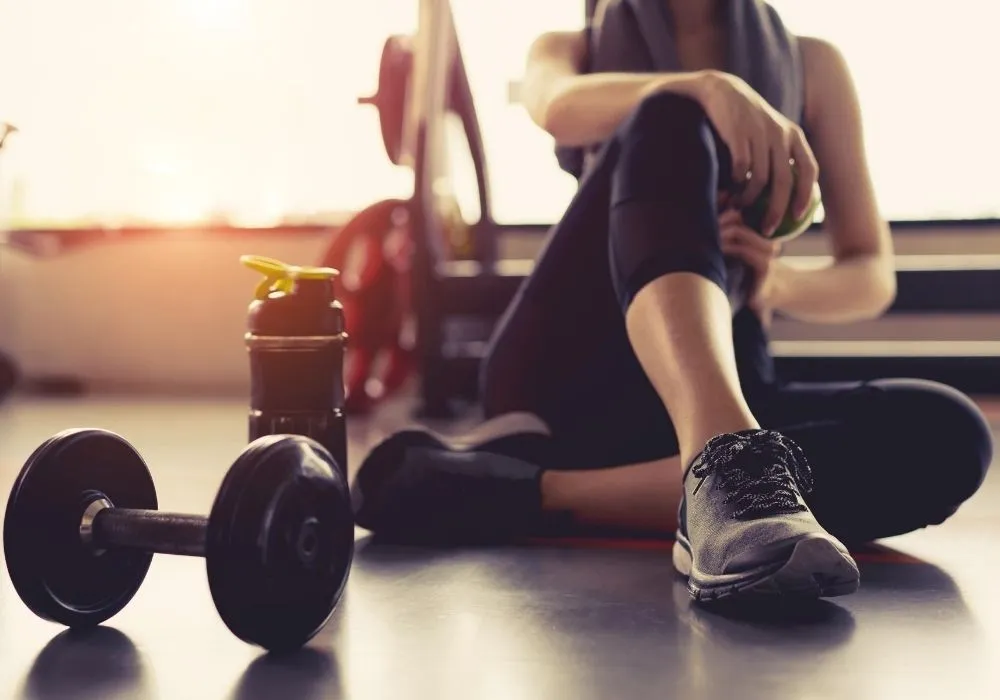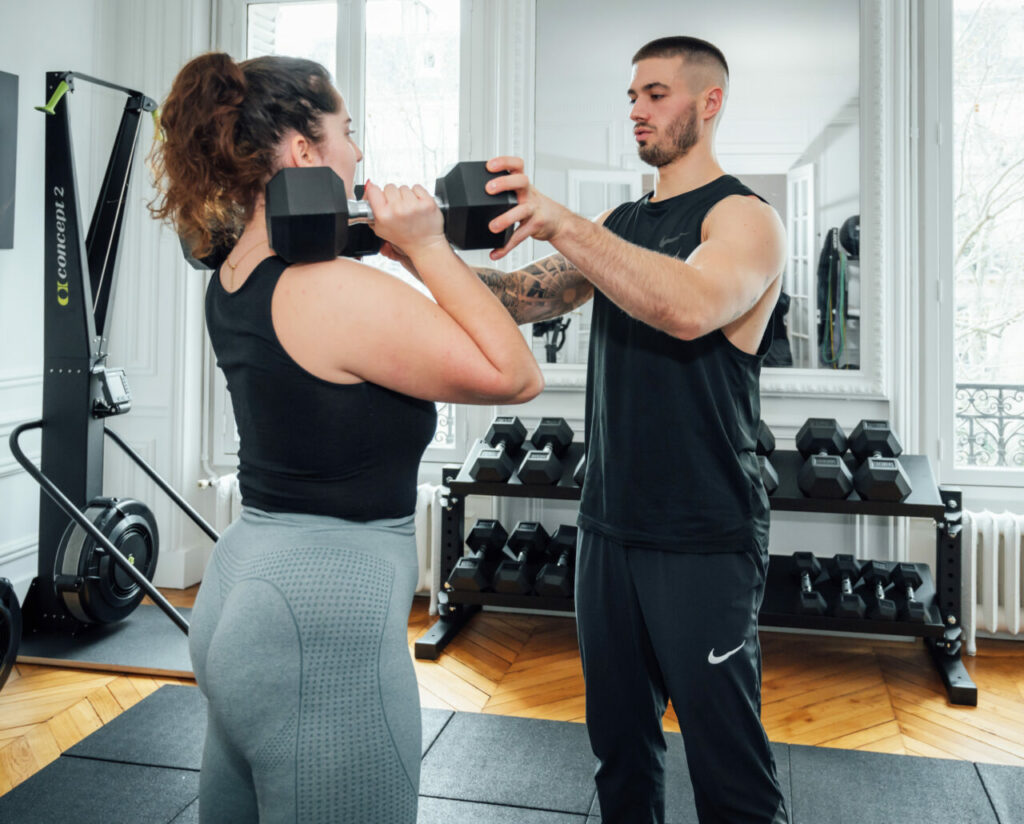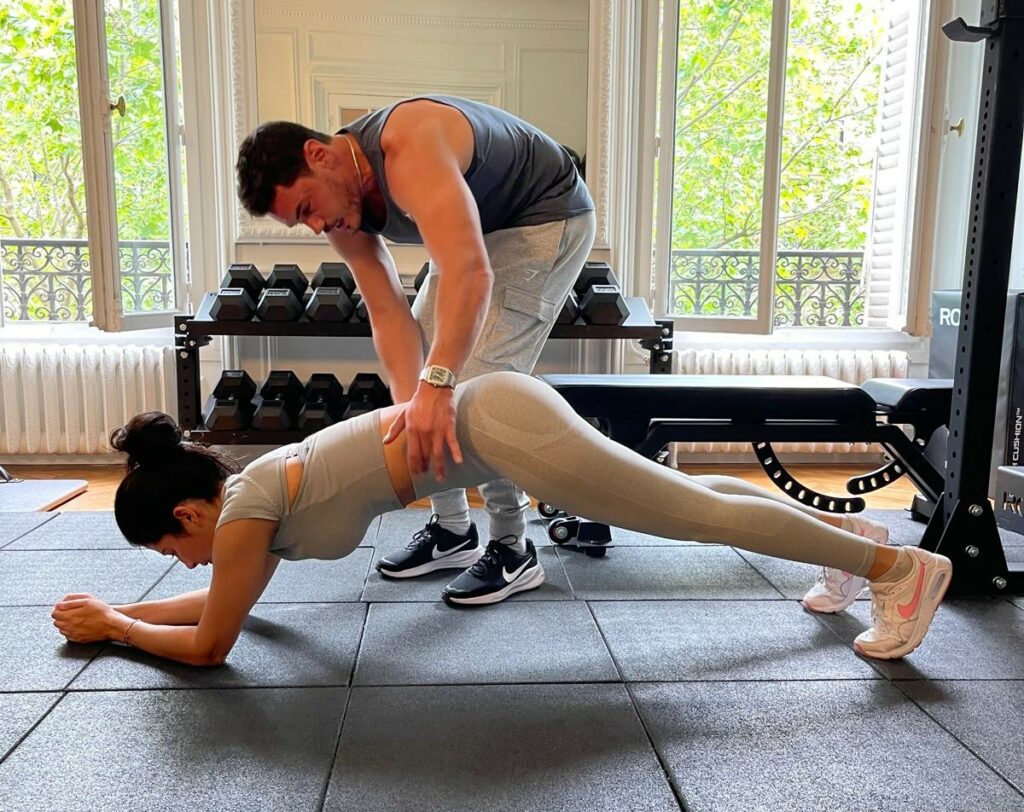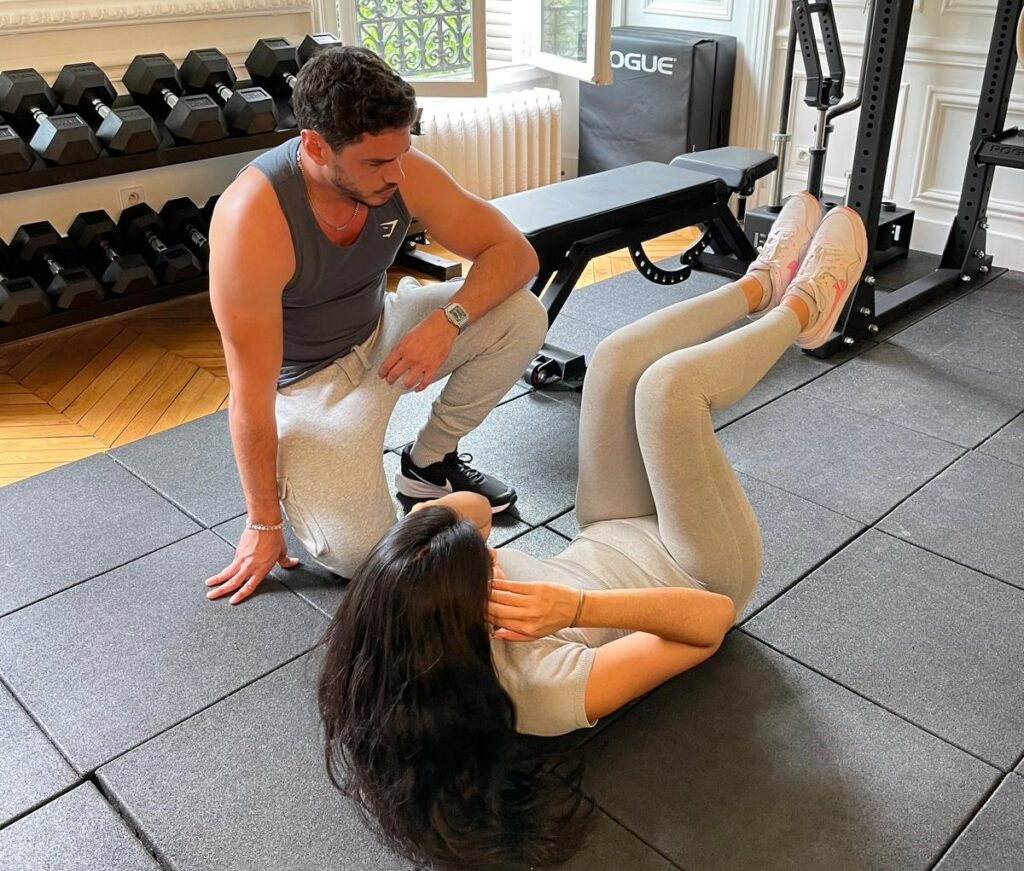
Regular physical activity is an essential pillar not only for maintaining good health but also for optimizing results in aesthetic medicine. In the context of an aesthetic medical center equipped with its own gym, integrating physical exercise into patients’ care pathways can have profound and lasting beneficial effects. Here is why it is highly recommended to engage in physical and sports activities
Physical exercise increases blood circulation, which allows for better oxygenation and nutrition of tissues, including the skin. This helps improve the skin’s radiance and can accelerate the healing process after aesthetic procedures. A 2014 study published in the Journal of Dermatological Science found that regular exercise promotes skin regeneration and can reduce the signs of skin aging
Sports reduce levels of inflammation in the body. Lowered inflammation is beneficial, especially after surgical or non-invasive aesthetic treatments, as it can decrease recovery time and improve aesthetic results. A 2017 study in Brain, Behavior, and Immunity showed that 20 minutes of moderate exercise can have an anti-inflammatory effect
Muscle strengthening and improving body texture are direct benefits of physical activity. These aspects are particularly relevant in an aesthetic context, as they complement treatments aimed at reshaping and firming the body. Exercise helps sculpt treated areas and maintain the results of procedures such as liposuction in plastic surgery and cryolipolysis, and lipocavitation in aesthetic medicine
With age, progressive muscle loss can evolve into sarcopenia, a condition characterized by a significant decrease in muscle mass and strength. Exercise, especially strength training, is essential to counteract this trend. It stimulates muscle protein synthesis, promoting the maintenance or increase of muscle mass. Studies show that older adults who regularly practice resistance exercises can not only prevent sarcopenia but also reverse its effects, maintaining better motor autonomy with less risk of falls as they age.

The psychological benefits of exercise are well documented, including reduced stress, anxiety, and improved mood. This overall well-being is essential, as a positive psychological state can significantly influence patients’ satisfaction with aesthetic treatments. According to a study published in the Journal of Health Psychology, regular physical and sports activity is strongly linked to a better body image
Additional research highlights that physical activity, particularly the combination of cardiovascular and resistance exercises, can increase basal metabolism, helping to burn more calories even at rest. A 2012 study in the American Journal of Clinical Nutrition noted that individuals who combined diet and exercise were better able to regulate their metabolism compared to those who focused solely on diet
Engaging in physical and sports activities plays a crucial role not only in weight loss but also in preventing weight regain. Here are specific study results demonstrating the effectiveness of exercise in these contexts.
A 2010 study published in Obesity followed 197 overweight adults who lost at least 10% of their initial body weight. The study found that those who participated in at least 200 minutes of moderate physical activity per week were significantly more likely to maintain their weight loss over an 18-month period. This group managed to maintain an average weight loss of 13 kg, compared to 6 kg for those who did not engage in regular physical activity.
Integrating physical exercise into an aesthetic medicine care pathway is not just a complement to other treatments; it is an integral part of long-term success
Menopause is often associated with weight gain, partly due to hormonal changes that can influence fat distribution and metabolism. A significant study published in the Journal of the North American Menopause Society examined the effects of exercise on weight gain in menopausal women. The results indicated that women who participated in regular aerobic sessions for at least 150 minutes per week were less likely to gain weight despite the hormonal changes associated with menopause

Sleep plays a fundamental role in overall health and well-being, influencing everything from physical recovery to mental health. Physical activity is recognized for its benefits on sleep quality. Here are data from clinical studies highlighting how exercise can improve sleep.
A major 2013 study published in the Journal of Clinical Sleep Medicine examined the impact of regular exercise on sleep in adults with insomnia. Participants who engaged in 150 minutes of moderate to intense physical activity per week experienced a significant improvement in sleep quality, measured by longer sleep duration and reduced time to fall asleep. Additionally, they reported a reduction in insomnia symptoms.
Sleep apnea, a condition characterized by frequent interruptions in breathing during sleep, can be alleviated by regular physical activity tailored to each person. A 2015 study in the American Journal of Respiratory and Critical Care Medicine found that patients with moderate to severe sleep apnea who participated in a regular exercise program saw a notable reduction in apnea symptoms, including fewer breathing interruptions during the night.
Deep sleep, or slow-wave sleep, is crucial for physical and mental recovery. Research has shown that regular exercise can increase the proportion of deep sleep. A 2017 study published in Sleep Medicine Reviews concluded that participants who engaged in regular sports practice benefited from an increase in their deep sleep, which is essential for tissue repair and memory consolidation, leading to better overall health.
Physical activity also influences the regulation of hormones, including melatonin, the sleep hormone. A 2014 study in the Journal of Pineal Research demonstrated that people who engaged in physical activity in natural light had higher melatonin levels in the evening, facilitating sleep onset and quality
Regular exercise is widely recommended as a preventive measure against many chronic diseases. Scientific evidence strongly supports this recommendation, showing beneficial effects on preventing diabetes, cardiovascular diseases, and even certain types of cancer.
Type 2 diabetes is one of the most studied chronic diseases in relation to exercise. An influential meta-analysis published in the Annals of Internal Medicine examined the effects of physical activity on the risk of developing diabetes. Researchers found that a combination of resistance and aerobic activity significantly reduces the risk of diabetes in high-risk individuals, with a risk reduction of up to 40%.
Cardiovascular diseases, including coronary heart disease and heart failure, can also be prevented by regular exercise. A study published in the Journal of the American College of Cardiology followed over 33,000 men and women for 14 years and found that those who engaged in regular physical activity had a 35% reduced risk of death from heart disease compared to those who did not exercise regularly.
Physical exercise has also been associated with a reduced risk of certain cancers. According to a study published in JAMA Internal Medicine, physical activity is associated with a reduced risk of 13 types of cancer, including breast, prostate, and colon cancer. Researchers found that regular physical activity decreases the risk of colon cancer by 16% and breast cancer by 10%.
Research in the field of chronic lung diseases, such as chronic obstructive pulmonary disease (COPD), shows that exercise can improve lung function and quality of life. A 2016 study in Thorax found that COPD patients who exercised regularly had better respiratory capacity and fewer symptoms than those who were less active

An influential study published in Brain, Behavior, and Immunity showed that even a single episode of moderate exercise can induce an immediate anti-inflammatory response. The study measured pro-inflammatory cytokine levels, particularly TNF-α, before and after exercise in healthy participants. The results revealed a significant decrease in pro-inflammatory cytokines after exercise, indicating a reduction in inflammatory activity.
Research published in the Journal of the American Heart Association studied the long-term effects of regular exercise on inflammatory markers, such as C-reactive protein (CRP), in older adults. After a 12-week exercise program, participants showed a significant decrease in CRP, suggesting that regular exercise can play a preventive role against chronic inflammation.
The benefits of physical activity also extend to individuals with chronic inflammatory conditions, such as rheumatoid arthritis or Crohn’s disease. A study in Arthritis Research & Therapy found that rheumatoid arthritis patients who regularly participated in gentle exercise sessions had reduced levels of inflammatory biomarkers and improved disease symptoms
Oxidative stress, closely linked to inflammation, can also be modulated by exercise. Research published in Free Radical Biology and Medicine demonstrated that regular exercise increases the body’s antioxidant capacities and decreases the production of free radicals, contributing to reduced inflammation and aging of the body and skin
In conclusion
These studies confirm that physical exercise can significantly reduce inflammation levels in the body, offering preventive and therapeutic benefits against various inflammatory and chronic diseases. Regularly integrating physical activity into a healthy lifestyle is essential for overall health and well-being, reinforcing the importance of facilities like gyms in aesthetic medical centers to encourage an active lifestyle among patients. These studies demonstrate that regular physical exercise is essential not only for weight loss but also for maintaining this loss in the long term. For patients in aesthetic medical centers, integrating a personalized exercise routine can greatly improve the chances of maintaining the benefits of a diet and effectively managing weight variations during menopause. Thus, the integrated gym offers a substantial advantage in supporting patients in their quest for sustainable well-being and aesthetics.
Integrating physical activity into your aesthetic care routine is not only a matter of beauty but also of overall health.
In our aesthetic medical center, we pride ourselves on combining the best of aesthetic care with the proven benefits of health and fitness. With a fully equipped gym and experienced sports coaches, we offer our clients a comprehensive experience that goes beyond traditional treatments.
Practicing sports regularly in our center, under the guidance of qualified coaches, not only allows you to sculpt your body and improve skin elasticity but also to enhance the results of your aesthetic medical treatments. A personalized exercise program can increase treatment effectiveness by stimulating circulation, reducing inflammation, and accelerating skin regeneration, contributing to a rejuvenated and dynamic appearance.
We invite you to discover how a tailored physical activity regimen can transform your approach to health and beauty. Schedule your personalized assessment today and start your journey towards total well-being, where sports and health work hand in hand to reveal the best version of yourself. Join us to experience the perfect synergy between sports, health, and aesthetics, and see for yourself how exercise can not only improve your appearance but also enrich your life.

Bibliography:
Prevention of Type 2 Diabetes
Annals of Internal Medicine,
“Effect of Exercise Intervention on Long-Term Modification of Diabetes Risk” (meta-analysis). Specific article details not provided in the original text.
Reduction of Cardiovascular Diseases
Journal of the American College of Cardiology,
“Physical Activity and Reduced Risk of Cardiovascular Diseases: Long-term Follow-up of a Large Cohort Study” (14-year cohort study). Specific article details not provided in the original text.
Impact on Cancer Prevention
JAMA Internal Medicine,
“Association of Leisure-Time Physical Activity With Risk of 26 Types of Cancer in 1.44 Million Adults” (study on 1.44 million adults). Specific article details not provided in the original text.
Effects on Chronic Lung Diseases
Thorax,
“Exercise and Respiratory Health in Patients with Chronic Obstructive Pulmonary Disease” (2016 study). Specific article details not provided in the original text.
Reduction of Inflammation
Brain, Behavior, and Immunity,
“Exercise and circulating cytokine levels” (study on the immediate impact of exercise on inflammatory cytokines). Specific article details not provided in the original text.
Journal of the American Heart Association,
“Effect of Exercise on Inflammatory Profile of Older Adults: Systematic Review and Meta-Analyses” (systematic review and meta-analysis). Specific article details not provided in the original text.
Arthritis Research & Therapy,
“Physical Activity and Reduction of Inflammatory Markers in Rheumatoid Arthritis” (study on physical activity and rheumatoid arthritis). Specific article details not provided in the original text.
Free Radical Biology and Medicine,
“Impact of Regular Physical Activity on Oxidative Stress and Inflammation” (study on oxidative stress and physical activity). Specific article details not provided in the original text.
Improvement of Sleep Quality
Journal of Clinical Sleep Medicine,
“Exercise and Its Effects on Sleep in Postmenopausal Women” (2013 study on exercise and sleep). Specific article details not provided in the original text.
American Journal of Respiratory and Critical Care Medicine,
“Physical Activity Reduces Apnea Severity” (2015 study on sleep apnea). Specific article details not provided in the original text.
Sleep Medicine Reviews,
“Regular Exercise Increases Deep Sleep” (2017 review on exercise and deep sleep). Specific article details not provided in the original text.
Journal of Pineal Research,
“Exercise and Melatonin Levels in Humans” (2014 study on exercise and melatonin). Specific article details not provided in the original text.
These references provide a solid basis for further research on the benefits of physical activity in various health contexts. For complete information, including authors, year, and publication details, I recommend searching these titles in an academic database or university library.
To test a session, make a appointment on our sport website
If you enjoyed this article, you might be interested in the following articles:
Everything You Need to Know About Cellulite and Its Treatments in 2024
Comments